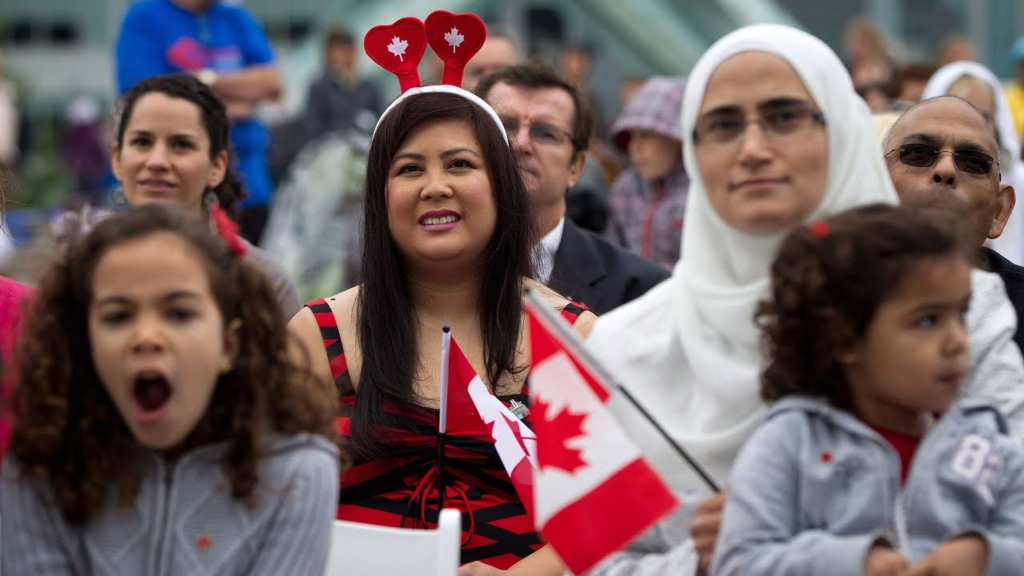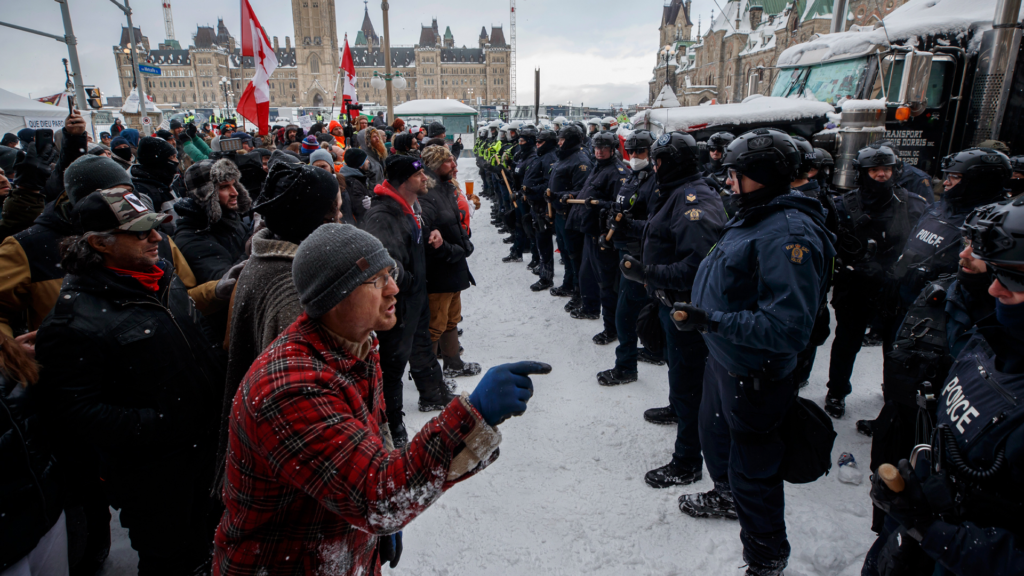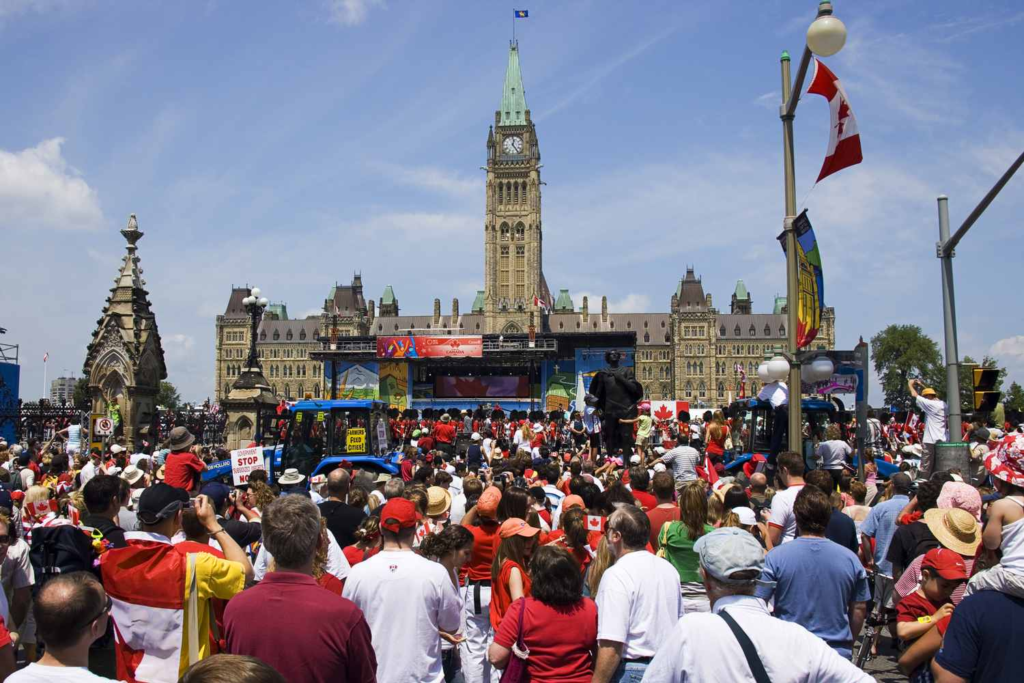Canada has diverse cultures, languages, religions, and values.
It is home to people from various backgrounds and origins, contributing to its vibrant society.
However, living in a multicultural country also poses challenges and difficulties, especially for newcomers and immigrants.
Cultural differences and clashes are at the top of the list. These can cause frustration, confusion, resentment, discrimination, and violence.
Therefore, it is important to avoid cultural differences and clashes and to foster a culture of respect, tolerance, and inclusion in Canada.
This article will discuss 10 ways to avoid cultural differences and clashes with Canadian norms and values and how to benefit from Canada’s cultural diversity and harmony.
Read on to learn more:
1. Learn About the History and Diversity of Canada and its People

The first way to avoid cultural differences and clashes with Canadian norms and values is to learn about the history and diversity of Canada and its people.
Canada has a long and complex history, shaped by the interactions and influences of various groups, such as the Indigenous peoples, the French and British colonizers, the immigrants and refugees from different parts of the world, and the regional and provincial identities.
Learning about the history of Canada can help you understand the origins and development of its culture, politics, economy, and society and how they affect the present and the future.
Learning about the diversity of Canada and its people can help you appreciate the variety and richness of the cultural expressions, traditions, languages, religions, and values that coexist in Canada and how they contribute to its multicultural identity and character.
Learning about the history and diversity of Canada and its people can also help you avoid making assumptions, generalizations, or judgments based on stereotypes or misinformation.
Instead, you approach each person and situation with curiosity, openness, and respect.
2. Respect the Official Languages and the Linguistic Rights of Canadians

The second way to avoid cultural differences and clashes with Canadian norms and values is to respect Canadians’ official languages and linguistic rights.
Canada has two official languages: English and French. Both languages have equal status and rights in the federal government and some provinces and territories.
Canadians have the right to communicate with and receive services from the federal government in their official language and to participate in the democratic and judicial processes in their preferred official language.
Canadians also have the right to learn and use official languages, supporting and promoting their linguistic vitality and diversity.
Respecting the official languages and the linguistic rights of Canadians means recognizing and appreciating the historical, cultural, and social significance of English and French in Canada and the contributions of bilingual and multilingual Canadians to the country’s identity and development.
It also means being willing and able to communicate effectively and respectfully with Canadians who speak different languages and to learn and improve one’s language skills and competencies.
Respecting the official languages and the linguistic rights of Canadians can help you avoid misunderstandings, conflicts, and barriers that may arise from language differences and foster a culture of linguistic inclusion and harmony in Canada.
3. Be Aware of the Social Norms and Etiquette in Different Settings and Situations

The third way to avoid cultural differences and clashes with Canadian norms and values is to be aware of the social norms and etiquette in different settings and situations.
Social norms and etiquette are the unwritten rules and expectations that guide the behaviour and interactions of people in a society.
They vary depending on the context, such as the place, the time, the occasion, the relationship, and the culture.
Being aware of the social norms and etiquette in different settings and situations means observing and learning how Canadians communicate.
It also means adapting and adjusting one’s behaviour and communication style to suit the situation and the audience and avoiding offending, confusing, or hurting others.
Being aware of the social norms and etiquette in different settings and situations can help you avoid cultural differences and clashes with Canadian norms and values and foster a culture of mutual understanding and respect in Canada.
4. Appreciate the Values and Beliefs of Different Religious and Spiritual Groups

Canada is a country of diverse religions and spiritualities, ranging from Christianity, Islam, Hinduism, Sikhism, Buddhism, Judaism, and Indigenous spirituality to atheism, agnosticism, and other forms of non-religion.
Each of these groups has its worldview, teachings, practices, rituals, symbols, and ethics, which shape the lives and identities of their adherents.
Appreciating the values and beliefs of different religious and spiritual groups means recognizing and respecting the diversity and complexity of the religious and spiritual landscape in Canada and the contributions of the various faith communities to the country’s culture and society.
It also means being curious and open-minded about learning and understanding the beliefs and values of others and being willing and able to engage in dialogue and cooperation with people of different faiths or no faith.
Appreciating the values and beliefs of different religious and spiritual groups can help you avoid cultural differences and clashes with Canadian norms and values and foster a culture of religious and spiritual pluralism and harmony in Canada.
Also read: Top 9 Tips for Accessing Quality Education and Health Care for Themselves and Their Families – An Immigrant Guide
5. Recognize and Avoid Stereotypes and Prejudices About Different Ethnic and Racial Groups

Stereotypes are the oversimplified and generalized assumptions or judgments we make about a group based on ethnicity, race, or other characteristics.
Prejudices are negative or hostile attitudes or feelings towards a group of people based on their ethnicity, race, or other characteristics.
Both stereotypes and prejudices can lead to discrimination, which is the unfair or unequal treatment of a group of people based on their ethnicity, race, or other characteristics.
Recognizing and avoiding stereotypes and prejudices about different ethnic and racial groups means being aware of the biases and misinformation that we may have or encounter about different groups and challenging them with facts and evidence.
It also means being respectful and empathetic towards the experiences and perspectives of different groups and acknowledging the diversity and complexity within and among different groups.
Recognizing and avoiding stereotypes and prejudices about different ethnic and racial groups can help you avoid cultural differences and clashes with Canadian norms and values and foster a culture of racial and ethnic equality and justice in Canada.
According to a Pew Research Center survey conducted in March 2021, the majority of Americans see at least some discrimination against Black, Hispanic and Asian people in the U.S., while fewer say the same about White people.
The survey also found that views of discrimination vary widely by race, ethnicity, and political affiliation.
A similar survey conducted by the Environics Institute for Survey Research in February 2020 found that most Canadians believe that racism is a serious problem in Canada and that it has increased in the past five years.
The survey also found that Canadians of different racial and ethnic backgrounds have different experiences and perceptions of racism in Canada.
These surveys suggest that stereotypes and prejudices are still prevalent and harmful in both the U.S. and Canada and that there is a need for more education and awareness on these issues.
6. Understand the Gender Roles and Expectations in Canadian Society

Gender roles and expectations are the social norms and standards that define how women and men should behave, dress, work, and relate to each other based on gender.
Various factors, such as culture, religion, history, education, media, and law, influence gender roles and expectations.
In Canada, gender roles and expectations have changed significantly due to social movements, legal reforms, demographic changes, and economic developments.
Some of the main features of gender roles and expectations in Canadian society are:
1. Gender equality
Canada is committed to promoting and protecting the rights and opportunities of women and men in all aspects of life, such as education, employment, health, politics, and family.
Canada has enacted various laws and policies to prevent and address gender discrimination and violence, such as the Canadian Charter of Rights and Freedoms, the Canadian Human Rights Act, the Employment Equity Act, and the Criminal Code.
Canada also supports advancing gender equality internationally by participating in the United Nations and other organizations.
2. Gender diversity
Canada recognizes and respects the diversity and complexity of gender identities and expressions beyond the binary of women and men.
Canada has taken steps to protect and celebrate the rights and dignity of people of different gender identities and expressions, such as transgender, non-binary, genderqueer, genderfluid, bigender, agender, androgynous, and intersex people.
For example, Canada has amended the Canadian Human Rights Act and the Criminal Code to prohibit discrimination and hate crimes based on gender identity and expression.
Canada has also introduced the Gender Recognition Act, which allows people to change their gender marker on federal identity documents without requiring medical evidence.
3. Gender balance
Canada strives to achieve a more balanced and fair representation and participation of women and men in various domains and sectors of society, such as leadership, decision-making, science, technology, engineering, mathematics (STEM), arts, culture, and sports.
Canada has implemented various initiatives and programs to encourage and support women and men to pursue their interests and talents, regardless of gender stereotypes and barriers.
For example, Canada has adopted a gender-balanced cabinet, launched the Women Entrepreneurship Strategy, and created the Sport Canada Gender Equity in Sport Strategy.
Understanding the gender roles and expectations in Canadian society means being aware of the history and current situation of gender issues and relations in Canada and the challenges and opportunities women and men face in their personal and professional lives.
It also means being respectful and supportive of the choices and preferences of people of different genders and being willing and able to challenge and change the gender norms and structures that limit or harm anyone’s potential and well-being.
Understanding the gender roles and expectations in Canadian society can help you avoid cultural differences and clashes with Canadian norms and values and foster a culture of gender inclusion and empowerment in Canada.
7. Adapt to the Climate and Geography of Canada

The seventh way to avoid cultural differences and clashes with Canadian norms and values is to adapt to the climate and geography of Canada and its regions.
Canada is a vast country that spans six time zones and covers a variety of climates and landscapes.
Each region has its distinctive features, challenges, and opportunities, as well as its own culture, history, and identity.
Adapting to the climate and geography of Canada and its regions means being prepared and flexible for the different weather conditions and seasons that may affect your daily life, such as temperature, precipitation, daylight, and natural hazards.
It also means being respectful and responsible for the natural environment and resources that sustain the country and its people, such as water, land, air, wildlife, and energy.
It also means being curious and adventurous about exploring and experiencing the beauty and diversity of Canada’s nature and culture and learning from the people who live in different regions.
Adapting to the climate and geography of Canada and its regions can help you avoid cultural differences and clashes with Canadian norms and values and foster a culture of environmental and regional awareness and appreciation in Canada.
8. Participate in the Civic and Political Life of Canada

Civic and political life refers to how citizens can influence and contribute to the public affairs and decision-making processes of their country, province, territory, municipality, or neighbourhood.
Participation in civic and political life can take many forms, such as voting, running for office, joining a political party or group, contacting elected representatives, and attending public meetings.
Also, consultations, signing petitions, expressing views on the Internet or in the media, joining a community organization or initiative, volunteering for a social cause, or protesting against injustice.
Participating in the civic and political life of Canada and its communities means being informed and engaged about the issues and challenges that affect the country and its people and the opportunities and solutions that can improve them.
It also means being respectful and constructive in the dialogue and debate with others who may have different opinions or interests and being willing and able to cooperate and compromise for the common good.
It also means being responsible and accountable for the actions and outcomes of one’s participation and being ready to accept and support the democratic will of the majority while also protecting the rights and interests of the minority.
Participating in Canada’s civic and political life and communities can help you avoid cultural differences and clashes with Canadian norms and values and foster a culture of civic and political involvement and empowerment in Canada.
9. Celebrate the Cultural Festivals and Events of Canada and its Diverse Groups

Celebrating the cultural festivals and events of Canada and its diverse groups is one of the ways to avoid cultural differences and clashes.
You can learn more about different Canadian communities’ traditions, histories, and identities by joining these festivities.
You can also show respect and appreciation for their contributions to the country’s multiculturalism and diversity.
Canada has a variety of cultural festivals and events throughout the year, reflecting its vibrant cultural mosaic.
Some of the biggest and most popular festivals in Canada are:
- Carnaval de Québec: The largest winter festival in North America, held every January in Quebec City. It features ice sculptures, ice canoe races, snow playgrounds, concerts, and more.
- Calgary Stampede: The greatest outdoor show on Earth, held every July in Calgary. It showcases Alberta’s cowboy culture and heritage with rodeos, parades, concerts, and more.
- Toronto International Film Festival: One of the leading film festivals in the world, held every September in Toronto. It premieres hundreds of films from various genres and countries, attracting many celebrities and filmmakers.
- Winterlude: Canada’s cherished winter festival, held every February in Ottawa and Gatineau. It features ice skating on the world’s longest rink, ice sculptures, a snow playground, concerts, and more.
- Canadian Tulip Festival: The largest tulip festival in the world, held every May in Ottawa. It displays over a million tulips of different colours and varieties and commemorates the friendship between Canada and the Netherlands.
- Montreal International Jazz Festival: The largest jazz festival in the world, held every June and July in Montreal. It hosts thousands of musicians worldwide and offers free and paid concerts, workshops, and activities.
10. Seek out Opportunities to Interact and Exchange with Canadians from Different Backgrounds and Cultures
Seeking opportunities to interact and exchange with Canadians from different backgrounds and cultures is another way to avoid cultural differences and clashes.
You can learn more about their stories, perspectives, and experiences by engaging with different people.
You can also share your culture and values with them and find common ground and mutual respect.
There are many opportunities to interact and exchange with Canadians from different backgrounds and cultures, both on and off campus.
Also read: How to Adapt to the Canadian Culture and Workplace Etiquette
Some of the possible sources or methods are:
1. You are joining a club, team, or organization that interests you or relates to your field of study.
You can find a list of student clubs and associations at your university website or student union office.
You can also look for community groups or volunteer organizations that match your hobbies or passions.
2. Invite a classmate, roommate, or neighbour to hang out with you
You can ask them to join you for a coffee, a meal, a movie, a game, or any other activity you enjoy.
You can also invite them to your home or dorm and offer them food or drinks from your culture.
3. You are befriending a Canadian student or family through a buddy or host program
Some universities and community organizations offer programs that pair international students with Canadian students or families who can help them adjust to life in Canada.
You can contact your international student office or local settlement agency to learn more about these programs.
4. Participating in a cultural exchange or study abroad program
You can apply for a program that allows you to travel to another country or region and learn about its culture, language, and people.
You can also host a student or visitor from another country or region and show them around your city and campus.
You can check with your academic advisor or international student office for opportunities and requirements.
5. You are attending a cultural festival or event in your city or region.
You can learn about Canada’s cultural festivals, events, and diverse groups by searching the web or visiting the local tourism office.
You can also ask your friends or classmates for recommendations or invitations.
By celebrating these festivals and events, you can experience the richness and diversity of Canadian culture.
Conclusion
Canada is a country that prides itself on its multiculturalism, diversity, and inclusivity, as it is home to people from different origins, languages, religions, and lifestyles.
Understanding and respecting Canadian norms and values is crucial in avoiding cultural differences and clashes.
By implementing these strategies, you can navigate Canadian society with ease and confidence.
Remember, the goal isn’t to lose your cultural identity but to appreciate and respect the diversity that makes Canada unique.
Good luck!